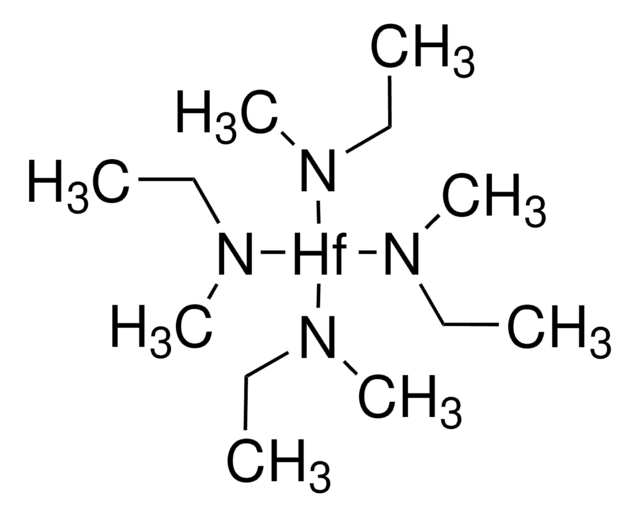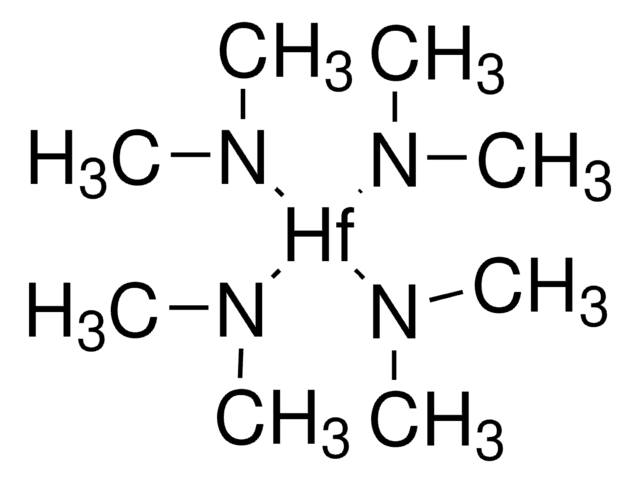258202
Hafnium(IV) chloride
98%
Synonyme(s) :
Hafnium tetrachloride, Tetrachlorohafnium
About This Item
Produits recommandés
Qualité
for analytical purposes
Niveau de qualité
Pression de vapeur
1 mmHg ( 190 °C)
Essai
98%
Forme
powder
Pf
432 °C (lit.)
Solubilité
H2O: decomposes(lit.)
Chaîne SMILES
Cl[Hf](Cl)(Cl)Cl
InChI
1S/4ClH.Hf/h4*1H;/q;;;;+4/p-4
Clé InChI
PDPJQWYGJJBYLF-UHFFFAOYSA-J
Vous recherchez des produits similaires ? Visite Guide de comparaison des produits
Catégories apparentées
Description générale
Application
- A precursor in the synthesis of lithium hafnium phosphate, which is a solid electrolyte material used in lithium batteries due to its high ionic conductivity and chemical stability.
- A catalyst in the acetalization process of various carbonyl compounds, including aldehydes and ketones.
- A catalyst in the direct ester condensation of carboxylic acids with alcohols.
- A high-capacity cathode material for lithium and sodium-ion batteries.
Mention d'avertissement
Danger
Mentions de danger
Classification des risques
Eye Dam. 1 - Met. Corr. 1 - Skin Corr. 1
Risques supp
Code de la classe de stockage
8A - Combustible corrosive hazardous materials
Classe de danger pour l'eau (WGK)
WGK 3
Faites votre choix parmi les versions les plus récentes :
Déjà en possession de ce produit ?
Retrouvez la documentation relative aux produits que vous avez récemment achetés dans la Bibliothèque de documents.
Les clients ont également consulté
Articles
In the last two decades, a new method termed solid-state metathesis (SSM) has been developed to synthesize compounds that are often difficult to produce conventionally.
Global Trade Item Number
| Référence | GTIN |
|---|---|
| 258202-50G | 4061826061688 |
| 258202-10G | 4061826061619 |
Notre équipe de scientifiques dispose d'une expérience dans tous les secteurs de la recherche, notamment en sciences de la vie, science des matériaux, synthèse chimique, chromatographie, analyse et dans de nombreux autres domaines..
Contacter notre Service technique









